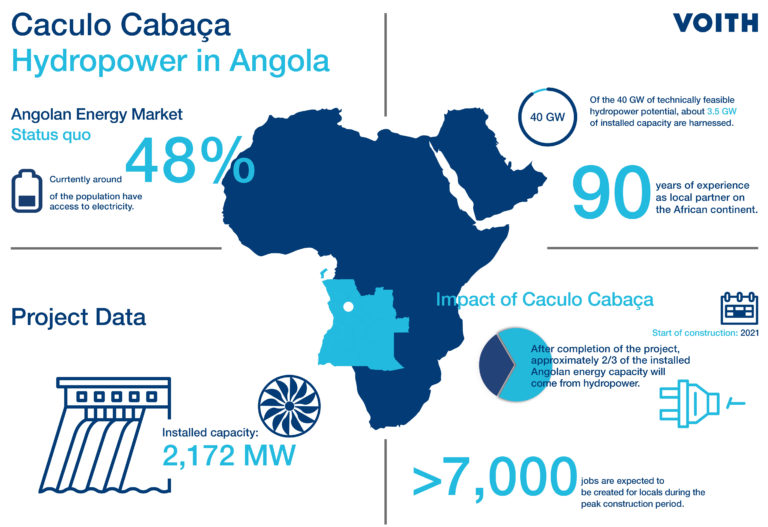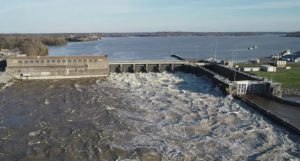Voith Equips 2 GW Hydropower Plant in Angola

Energy in Angola (Image source: Voith Hydro Holding GmbH & Co. KG)
The hydropower plant on the Kwanza River is around 250 km southeast of the capital Luanda in the province of Kwanza Norte. Caculo Cabaça is set to be connected to the grid there with a total capacity of 2,172 MW before the decade is out. The pilot tests were recently completed. Following commissioning of the power plant, around two-thirds of Angolan energy will come from hydropower.
“We are absolutely delighted to be contributing to this milestone project on the African continent,” says Dr. Toralf Haag, Voith Group CEO. This important project will be coordinated from Heidenheim, where most of the value creation will be generated at the company’s headquarters. This makes the project execution challenging from both a technological and logistical perspective. Our experienced team of experts has therefore been preparing the work meticulously for several years now.
Lasting commitment
For more than 90 years, Voith has been involved in the development of hydropower projects across Africa and has thus helped to support the economic growth. In Angola, the company is already a familiar name due to its supply of equipment for the Cambambe I and Cambambe II hydropower facilities. In this context, the training of local skilled workers has always played a vital role. For Caculo Cabaça, a six-stage training concept has been developed for regional workers, which also provides for the operation of a training center in Angola. The company will continue to support the project beyond the commissioning stage, to ensure smooth operation in the long term.
“We see ourselves as a partner for sustainable project implementation and provide support to plant operators and governments, from joint project development to the training of personnel,” says Dr. Tobias Keitel, President and CEO of Voith Hydro.
Unique financing concept
Voith arranged a long-term, tailored financing package with attractive terms and conditions for the Republic of Angola. This was implemented with the support of the German government and the specialists at Euler Hermes, through export credit guarantees, and a German banking consortium headed by Commerzbank and UniCredit. Especially in times of constrained budgets, the programs offered by the German Foreign Trade and Investment Promotion Scheme are particularly important for government clients in Africa. This allows long-term and sustainable financing of the investment sums for infrastructure projects of this kind. The order volume for Voith amounts to more than USD 1 billion.
Milestone for society and industry
The project is a milestone for Angola on its journey to a broader and more stable energy supply for society and industry. Currently, the existing electricity supply reaches around half the population, meaning that many people, mainly outside the large cities, still do not have access to electricity. This is despite the fact that Africa has a huge hydropower potential that has not yet been tapped.
Caculo Cabaça is an excellent example of how a regional power supply can be expanded sustainably, efficiently, and with low emissions. The additional electricity generated in future will among other things help to replace ecologically unsound and unsustainable energy sources and supply energy to regions that have not been covered to date. Above all, however, the availability of power will improve important infrastructure facilities like hospitals. In addition, the surplus energy that is expected to be produced is set to be offered to neighboring countries, which will in turn boost Angola’s economic development. Moreover, during the main construction period, around 7,000 jobs will be created for workers in the region.
Source: Voith GmbH & Co. KGaA







